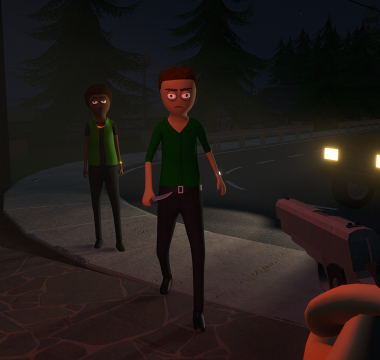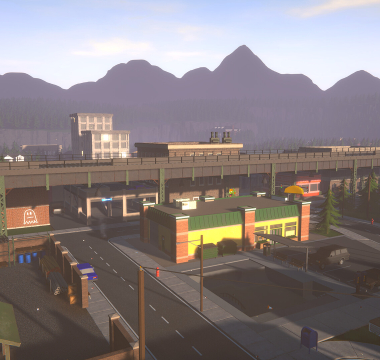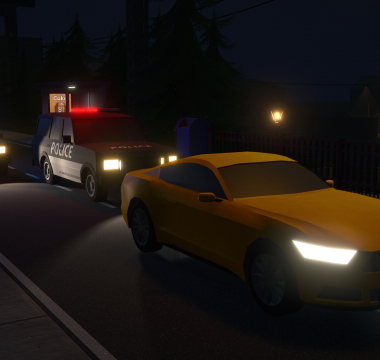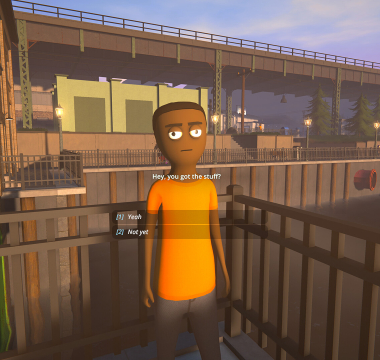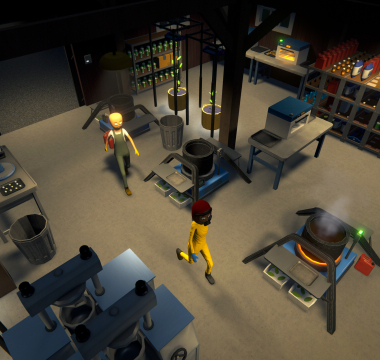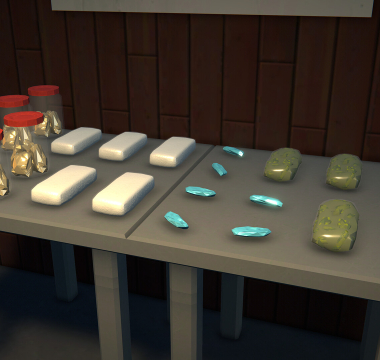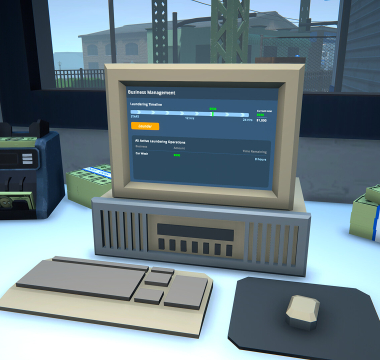I dove into Schedule I with a mix of cautious excitement and curiosity. The game immediately caught my attention with its intriguing title and promise of an unconventional narrative. I felt that this wasn’t just a typical adventure but a layered experience that combined narrative depth with gameplay innovation. As I began my journey, I found myself drawn to the balance between narrative and mechanic design that Schedule I offered, setting the stage for a memorable voyage through enigmatic worlds.
Diving into the Mechanics
From the moment I started playing, I was impressed with the mechanics that Schedule I embraced. The controls felt intuitive while presenting layers of complexity that kept me engaged hour after hour. Navigating the game world required precision as well as creativity, and I was often kept on my toes by its subtle challenges. The gameplay flowed smoothly, allowing me to feel immersed in each interaction. Every mechanic I encountered was designed to foster a sense of agency, making my every choice weigh significantly on how my adventure unfolded.
Interacting with a Cooperative Narrative
One of the aspects that made Schedule I stand out was its narrative approach. I found the story to be interwoven seamlessly with gameplay, blurring the boundaries between narrative exposition and interactive involvement. Characters in the game were crafted with individual backstories that offered glimpses into their motivations. I experienced many moments where conversations felt meaningful, and choices led to unexpected paths and shifts in tone. This dynamic narrative design allowed me to continuously explore different facets of the in-game world, and I embraced the unpredictability as part of its charm.
Exploring the Visual Aesthetics
The aesthetic direction of Schedule I had an undeniable impact on my overall experience. The art style was both fresh and immersive, integrating surreal, abstract visuals with more grounded elements of design. I marveled at how colors and textures were used to create environments that felt both alien yet familiar. Every scene was thoughtfully composed, and the detailed backgrounds often invited closer inspection. As I traversed different levels, I found that each area had a distinctive look that not only supported the storyline but also evoked a range of emotions—from a sense of wonder to underlying tension.
Delving into the Soundscape
The auditory experience in Schedule I was another element that enriched my time with the game. The soundtrack was carefully curated to accentuate the shifting moods of the narrative. From haunting melodies during introspective moments to more invigorating beats during high-energy sequences, each musical choice felt intentional and symptomatic of the game’s multifaceted identity. I particularly appreciated the way ambient sounds and subtle cues were used to guide me through difficult sections or to alert me to hidden details in the environment. The immersive sound design not only complemented the visual experience but also deepened my emotional connection to the unfolding story.
Appreciating the Immersive World-Building
World-building in Schedule I was a process that truly captivated my attention. Every location I visited appeared infused with history and hidden layers that begged for exploration. The developers had clearly invested in creating an expansive universe filled with small details that brought each area to life. I found myself pausing frequently to explore intricate backgrounds, noticing symbols and secrets that hinted at deeper lore. The cohesive design of the environments made it feel like I was uncovering a rich tapestry of stories through the very fabric of the game world, making every journey feel personal and memorable.
Experimenting with Customization and Player Agency
The game’s approach to customization allowed me to imprint my own style onto the experience. I enjoyed the freedom to modify my character’s appearance and abilities, which added a unique personal touch to my progression. This flexibility was not just cosmetic; it extended into how I could interact with challenges and other characters. I spent considerable time experimenting with different combinations, each offering new ways to approach the puzzles and conflicts that presented themselves. The level of agency provided in decision-making empowered me to tailor the experience, making each playthrough feel like my own distinct adventure.
Navigating the Fluid Control Scheme and Responsiveness
Throughout my journey, I was consistently impressed with the responsiveness of Schedule I’s control scheme. The interface was designed with both clarity and precision in mind. Whether I was in the midst of solving an intricate puzzle or engaged in fast-paced action sequences, every input felt registered and executed seamlessly. I appreciated the balance between low-key exploration and intense interactive moments, both of which were supported by a control system that was both forgiving and challenging. This balance helped sustain my commitment to the game, as I never felt overly frustrated by mechanics or sluggish in my interactions.
Encountering Engaging Challenges and Puzzles
Challenges in Schedule I were presented in a way that required both quick thinking and long-term strategy. I encountered puzzles that pushed my problem-solving skills to the test while simultaneously engaging in encounters that demanded tactical decision-making. The puzzles were neither superficial nor repetitive; they were layered with multiple solutions and outcomes, allowing me to explore varied strategies. This design encouraged creative problem-solving and rewarded perseverance. The game’s ability to balance more leisurely exploration with moments of intense mental challenge left me continually engaged, always curious about what might come next within its enigmatic framework.
Interacting with Multifaceted Characters
My interactions with the characters in Schedule I provided some of the most memorable moments of my gameplay. Each character was endowed with depth and distinct personalities, often reflecting the broader themes of the narrative. I found that my conversations were more than mere exchanges of dialogue; they were windows into complex relationships and ideological conflicts. The script was rich with thoughtful and often philosophical overtones, inviting me to consider the underlying motivations behind each character's actions. As my personal journey progressed, these interactions felt pivotal in shaping not only the story but also my understanding of the game’s world and its underlying themes.
Delving into the Technical Stability and Performance
During my time with Schedule I, I experienced a level of technical stability that allowed me to focus on the experience without frequent interruptions. I observed that load times were optimized, and transitions between scenes were smooth, which particularly impressed me as a dedicated gamer who values immersion. The performance details, such as frame-rate consistency and graphical fidelity, contributed to an overall polished presentation that kept me engaged. While no game is entirely without bugs, my sessions were marked by moments of fluidity that suggested a rigorous testing process by the developers. This reliability in performance was an important aspect that reinforced my trust in the game, allowing me to fully appreciate its more creative endeavors.
Exploring Hidden Layers of Meaning
One surprising aspect of Schedule I was the depth of meaning woven into its many layers. As I progressed, I realized that behind the surface-level adventure was a commentary on various social and philosophical issues that resonated with me personally. The game’s narrative often nudged me to look beyond the obvious, prompting me to question the nature of authority, the interplay between fate and choice, and the consequences of rigid structures on personal freedom. This thematic richness invited me to engage not only as a player but also as an observer and thinker, making each discovery feel both complex and rewarding. I found that the deeper I engaged with these layered messages, the more meaningful the entire journey became.
The Impact of Replayability and Dynamic Storytelling
One of the most captivating aspects of Schedule I was its inherent replayability driven by a dynamic storytelling system. I was shown multiple ways to traverse the narrative, each path offering subtle variations in dialogue, environment, and gameplay challenges. As someone who values experiments in narrative-driven experiences, I appreciated the thoughtfulness behind every branching decision. This dynamic nature allowed me to explore alternative outcomes and experience the story from different angles across multiple playthroughs. It provided an avenue for self-reflection as I considered the consequences of each choice from a personal point of view, making every new session feel like a fresh encounter with both familiar and unexpected elements.
Unraveling the Layers of Emotional Engagement
As I journeyed further into Schedule I, the emotional depth of the experience began to anchor itself in my memory. There were moments where I felt an intense emotional connection to both the narrative events and the responses of in-game characters. By engaging with the subtleties of the plot, I encountered themes of loss, hope, tension, and redemption that resonated on a personal level. It was evident that the developers had deliberately crafted moments that were meant to stir deep emotions and elevate the gameplay beyond mere entertainment into an experience that invoked genuine introspection. This emotional engagement was a central pillar of my overall enjoyment, providing a counterbalance to the technical and mechanical acumen of the game.
Immersing in a World of Artistic Ambiguity
The creative direction of Schedule I led me to a realm of artistic ambiguity that was both challenging and delightful. I found that the visual representations and narrative cues were deliberately open to interpretation, inviting me to project my own thoughts and feelings into the experience. The ambiguity allowed for multiple readings, and I delighted in piecing together the symbolic imagery that peppered the environment. Rather than offering straightforward explanations, the game challenged me to ponder the connections between disparate elements, contributing to a rich, layered narrative tapestry. Experiencing this creative interplay between form and meaning was one of the most intellectually stimulating aspects of playing Schedule I.
Interacting with Evolving Game Dynamics
Throughout my exploration, I observed that the game kept its environment fresh by continuously evolving its dynamics in response to player intervention. The overall rhythm and pacing of the game were carefully modulated, ensuring that I was never overwhelmed by information or left wanting for more challenges. I encountered sections where rapid shifts in the dynamics required quick adaptation, and I admired the game’s ability to seamlessly shift gears between contemplative and action-packed moments. This evolving structure ensured that my experience felt tailored to my pace and decision-making style, a testament to the thoughtful design and playtesting undertaken by the development team. The harmony between evolving dynamics and player choice constantly pushed me to re-engage with the world in novel ways.
How to Download and Play Schedule I on Different Platforms
Schedule I is a free-to-play game available on a wide range of devices. Whether you want to play on PC, Mac, console, or mobile, this guide provides everything you need to know to download, install, and play Schedule I. It is important to follow the instructions carefully to have the best gaming experience.
Windows PC: Schedule I is available for Windows PC. You can download the game from the official website or a dedicated game launcher. Before installing, make sure your PC meets the minimum system requirements.
Mac: Schedule I is also available on Mac. You can download it from the official website. Make sure your device meets the required hardware guidelines to install and run the game without issues.
Chromebook: The game is not officially supported on Chromebooks. However, you might be able to play Schedule I by using cloud gaming services. This option requires a stable internet connection and a subscription to a supported cloud gaming platform.
PlayStation 5: Schedule I is fully supported on PlayStation 5. To download the game, use the PlayStation Store. It is important to keep your console updated to the latest firmware.
PlayStation 4: Schedule I is available on PlayStation 4. Download it directly from the PlayStation Store and follow the simple installation process.
PlayStation 3: This platform is not supported, so you cannot play Schedule I on PlayStation 3.
Xbox One: Schedule I is available on Xbox One. You can download the game from the Microsoft Store, ensuring your console meets the necessary system requirements.
Xbox 360: Xbox 360 does not support Schedule I and is not available on this platform.
Xbox Cloud: If you have an Xbox Cloud Gaming subscription, you can play Schedule I by streaming the game. This is a great way to enjoy the game without installing it on your device.
Nintendo Switch: Schedule I is available on Nintendo Switch. Download the game from the Nintendo eShop directly on your device for easy access.
Android: The mobile version of Schedule I is available for free download. You can install it from the official website or the appropriate app store for your device, provided your phone meets the necessary system requirements.
iOS (iPhone/iPad): Schedule I may not be available on the App Store due to certain restrictions. As an alternative, you can try playing the game via compatible cloud gaming services, if available.
How to Install Schedule I
To install Schedule I, simply download the game from the official store or website of your device. Follow the on-screen instructions to complete the installation process. For devices that do not support direct installation, consider using a cloud gaming platform to play the game.
System Requirements
On PC, Schedule I requires at least an Intel Core i3 processor, 8 GB of RAM, and a DirectX 11-compatible graphics card. For Mac and Android devices, ensure that your system meets the minimum operating system version and hardware specifications. Meeting these requirements will help ensure that the game runs smoothly.
Cheats and Mods
Schedule I is an online multiplayer game. Using cheats or mods is strictly prohibited and may result in a permanent ban from the game. It is best to play the game fairly without using any cheats or mods.
Unblocked Version
Schedule I cannot be played unblocked in school or work environments without using VPNs or cloud gaming platforms. Some networks may restrict access, so you might need to use these workarounds to enjoy the game in those settings.

-
Autor:
TVGS
-
Size:
8 GB available space


